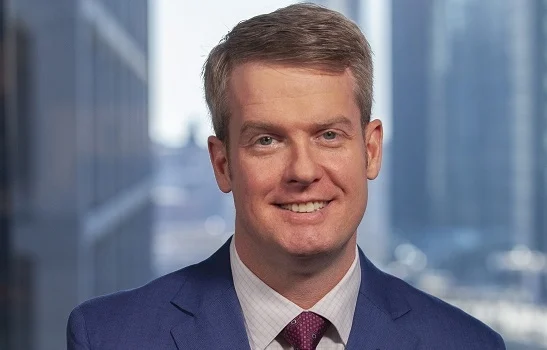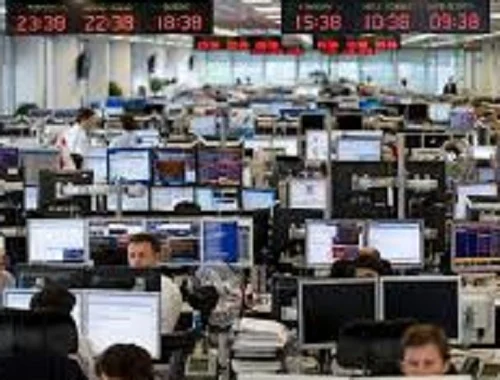ANALYSIS: CME to leverage crypto, equity growth with product enhancements
30th July, 2024|Radi Khasawneh

CME Group, which has benefitted from a boost in trading across asset classes last year, is looking to benefit from innovations across its crypto and equity markets to support further growth as continuing uncertainty drives activity in its markets
CME Group, which has seen trading volumes setting record after record in recent years, is looking to benefit from innovations across its crypto and equity markets to support further growth as continuing uncertainty drives activity in its flagship products.
Speaking to FOW ahead of its all-time record quarterly results announcement last week, CME’s global head of equities, foreign exchange and alternative products said the US group will leverage the approval of the first ether exchange traded funds (ETFs) in the US to roll out changes to its growing market in crypto ratio futures.
“We are still looking at better ways to allow the market to trade bitcoin versus ether, which means more dynamic contracts around the ratio,” Tim McCourt said in an interview. “Today, we have a fixed approach, but we are looking at enhancements like physical delivery embedded within those contracts. The physical market is increasingly interesting as the ETF market develops and adoption grows, the barrier to receiving the underlying is receding.”
The second quarter saw a spike in usage of CME’s Ether/Bitcoin Ratio futures, as ether benefitted from speculation around the ETF approval and bitcoin delivered relative underperformance. That dynamic has driven opportunities as the basis has shifted (see graph 1) with over $260 million (£202m) in notional traded in the period, a quarterly record. The overall crypto complex saw futures average daily volume rise 117% year-on-year to 79,000 contracts, including a record for its micro ether contracts, according to data published by the exchange.
Graph 1
Source: CME Group
The CME remains the market leader for bitcoin futures open interest, with $10.6 billion of open interest on July 30, according to data from Coinglass. The CME overtook Binance as the top venue by open interest at the end of October last year, and has maintained that leading position ever since. For McCourt that has been a justification for its focus on the most-traded currencies.
“The fact that we have been able to maintain a leading position across bitcoin and micro bitcoin futures in terms of open interest reinforces our conviction that there is a real strength in being the traditionally regulated venue in this space,” he added. “That has been a source of pride for the team here at CME, and we continue to focus on bitcoin and ether contracts for our tradeable complex and because of the regulatory clarity that exists there versus the alternatives.”
CME is also looking at building the crypto options market it launched in early 2020. Volume in options on its main bitcoin future peaked at 12,763 contracts trading in March 2023, according to FOW Data, but that is still just a fraction of the activity in CME's futures market. The US group trade 4,381 crypto options trading in June versus 248,962 futures, the data showed. The firm has beefed up its expertise in the area with the hire this month of Priyanka Jain in its New York office as a director focussed on equity and crypto currency products.
“In terms of options, volumes are growing but there is more we can do to establish them,” McCourt said. “We have brought in some expertise with a new hire, and we are actively exploring ways to match our offering with the market structure that options traders are familiar with in this space. Traders typically adopt very short-dated strategies, are used to short-term settlement windows and out of hours execution.”
Overall, CME Group's second quarter was the first period since 2010 when it saw year-on-year growth in both average daily volume and open interest across all of its asset classes.
“If I look back at the last two years, the one thing that has been consistent across the business lines that I am responsible for is that uncertainty has only been increasing,” McCourt said. “That holds true for all asset classes, whether it’s the way inflation is impacting not only the interest rate market, but also the knock-on effect on the equity market. That can be at odds with other signals from the macro data, so we see market moves that necessitate hedging and repositioning.”
That has been driven by uncertainty, but also created opportunities between traditionally siloed markets, creating a unique environment for McCourt since he first joined CME as managing director and global head of equity products in April 2013.
“I’ve been at CME Group for over 11 years, and the fact that this upswell of uncertainty is impacting all markets in one way or another is something that is unique about 2024,” he added. “If you look at the open interest through the first two quarters, all asset classes are up, options volumes are growing. While we are at a near term low in equity volatility during that period, there is significantly more volume than other comparable periods.”
McCourt started as an equity derivatives trader at JP Morgan in 2000, spending ten years at the US investment bank before taking up a delta one role at Royal Bank of Scotland. That experience in over-the counter (OTC) markets has come in useful as the CME has developed a deep bench of “futurised” OTC alternative products such as dividend and total return futures. That market rose 22% year-on-year to 111,000 contracts in average daily volume for the second quarter, according to CME results.
“The higher interest rate environment creates opportunity for people to trade in the equity markets,” he said. “Meaning, that even with general alignment on the direction of travel for equity index levels, the cost of capital can vary by participant therefore impacting trading strategies as people disagree over things such as the present value of dividends or the forward curve. A few of those things coupled together have helped drive that options volume trend. We have made significant improvements that have enhanced that effect, with things like strike array optimisation, block rule changes, and market-maker protections that have come together to support that demand.”
The US group has a range of equity index total return futures, including those based on Nasdaq, Russell, Dow Jones and FTSE indices, but the S&P 500 TRF based which references its established Effective Federal Funds Rate is its most-traded, reporting 344,000 lots in June, an increase of 99% on last year, according to FOW Data.
Options growth overall at the exchange was 11% higher year-on-year in the second quarter, to a record daily average of 5.2 million contracts, which included a 28% boost in equity index options, to 1.6 million lots, according to figures published by the exchange.
Media reports last month cited Robinhood executives saying they were looking at supporting CME crypto contracts on its retail focussed exchange. While not commenting on the move, McCourt said the Chicago exchange group has a long history of supporting retail flow in its markets.
“We have been harnessing the power of retail for years, it is one of the fastest growing parts of the business at CME Group,” he said. “The micro E-mini complex introduced in 2019 remains the most successful product launch in our history. When we look at the roll-out of that suite across asset classes and the launch of event contracts, it is certainly true to say that we have pivoted to designing contracts with that active individual trader in mind.
“The exchange now has more than 140 distribution partners across the globe, and we are always looking for more. The growth of the crypto market has brought about the advent of the fintech-oriented distribution platforms.”


